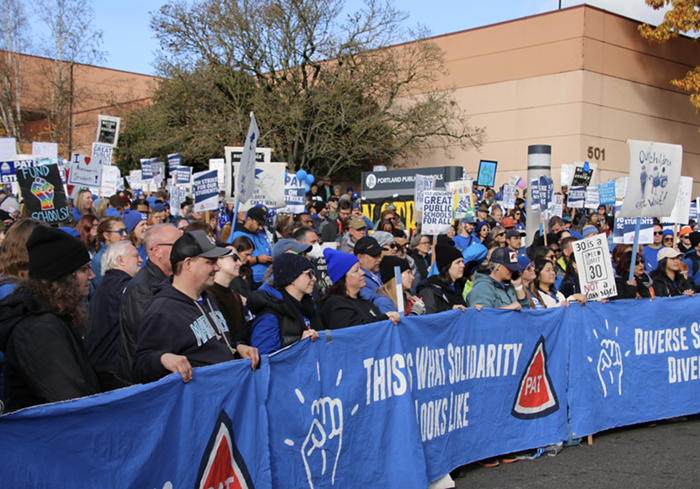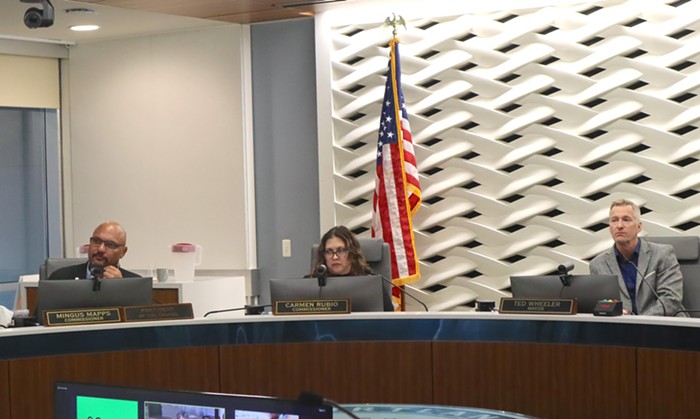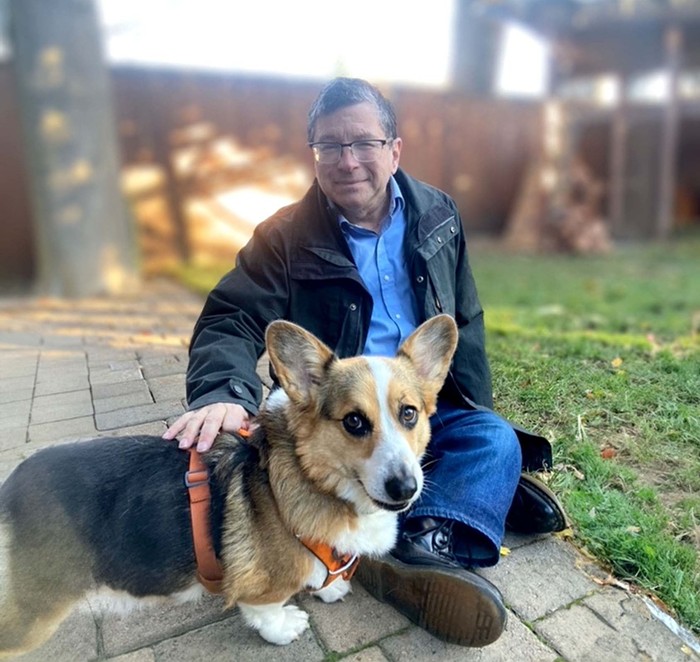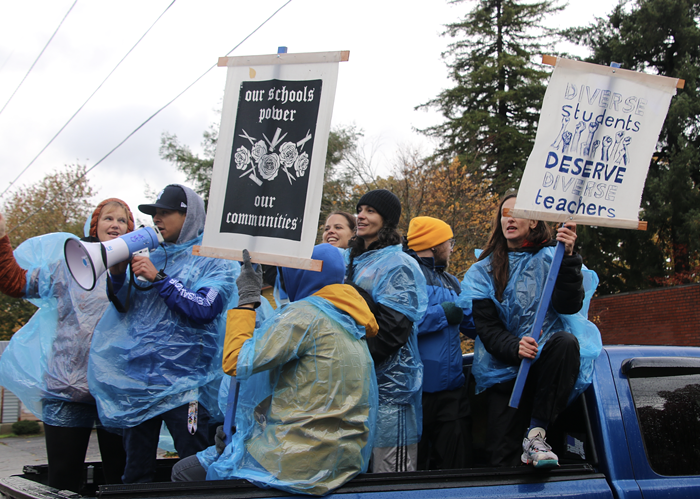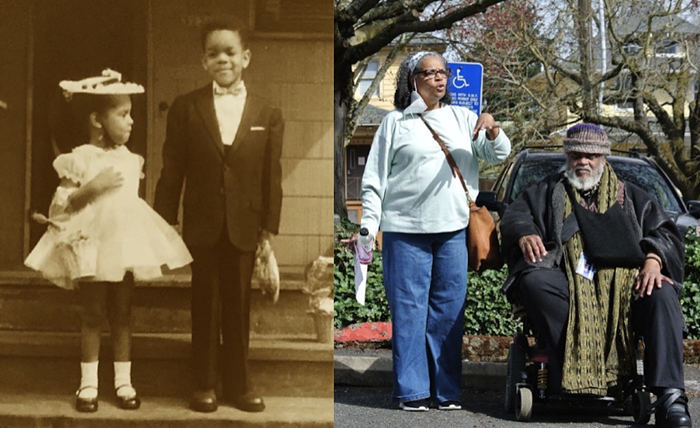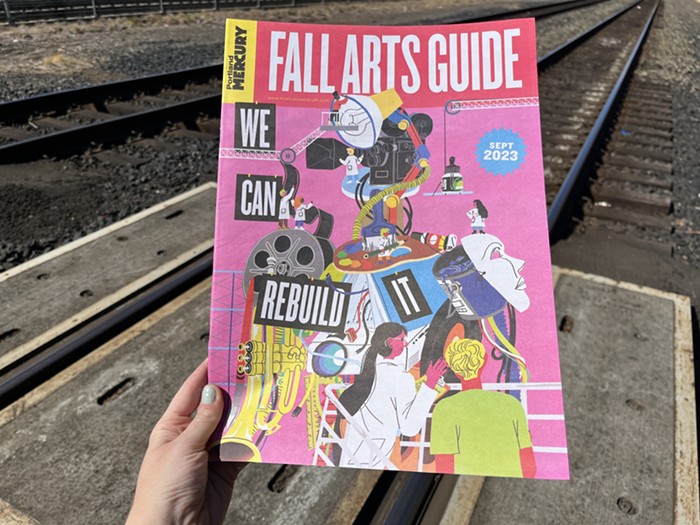LIFE IS GOOD when simply walking outside doesn't mean having to remember to carry a gun—you know, just in case. At the very least, it's a sign things are getting better.
I'd been skulking around the Arbor Mobile Home Park—a faded Hooverville of double-wides, campers, and trailers off NE Killingsworth—and I'd finally found someone willing to tell me about the place: a guy heading out to check his mailbox.
He was blunt. And not scared by my notebook. He'd clearly seen worse.
"This was a Wild West show around here. It was a combat zone," said the man, not so willing to give his name, but terribly willing to chat about everything else—thefts, shootings, stabbings, garbage in the streets, "scum" neighbors who deal drugs, and new hope thanks to some changes this summer.
He was willing to show me around. So I told him why I was there.
DESTINATION 911
The Arbor, as quiet as it seemed on a gray weekday afternoon, had shown up quite prominently on a list of the 20 Portland addresses most responsible for 911 dispatches over the 12 months that ended last Halloween. Precisely 100 times in that span, data shows—about twice a week—a 911 call resulted in cops coming down to the park.
My guide wasn't surprised. "I used to never walk around here without a gun," he said way too breezily.
The Mercury, working with Commissioner Steve Novick's office and the Portland Bureau of Emergency Communications, had requested the 911 data last month in hopes of getting a better glimpse at some of the region's most deeply rooted public safety challenges.
We thought the story might be about finding ways to save money at a time of budget wrangling and continued questions about city spending. Could officials save cash by proactively targeting certain addresses, thereby reducing disproportionate numbers of fire, medical, and police calls?
Maybe. But even if it's good policy, it might not be worth the effort. Even the worst "offender" on the list—the Portland Rescue Mission, with its 345 dispatched calls—is responsible for just a fraction of a typical year's hundreds of thousands of calls and dispatches. And many of these addresses already sit within the system's crosshairs. Like the Arbor.
Instead, the data amounts to one more way to talk about problems and issues—like homelessness, gentrification, poverty, addiction, and crime—that Portland has come to know all too well.
"Some of these locations are simply going to generate a lot of calls through no fault of their own," says Sergeant Greg Stewart of the Portland Police Bureau, referring especially to the handful of hospitals and assisted-living centers on the list. "Other locations serve a population that tends to create more public safety demands.
"We try to develop strategies that ensure individuals can receive services, remain safe but also not become an unsustainable drain on public safety resources."
"IT NEVER GOES DOWN"
"It's an easy target," Jason Renaud, a volunteer with the Mental Health Association of Portland, says of the Portland Rescue Mission.
The building, presiding right where the Burnside Bridge touches down in Old Town, is infamous for its nightly queues of homeless Portlanders waiting for a chance at shelter or a meal.
Portland Rescue Mission wasn't Renaud's first guess for the top spot on the 911 list, but he allowed that it made sense. Of the 345 dispatches to the mission, only two-thirds were classified as medical.
"These are people who've gone without care for a long time. They're cold, mad, and standing around. They're often impaired. And that's not a good mix," Renaud says of the daily lines.
"Those are the lines that indicate whether community services are doing what they're supposed to be doing. If that line goes down, I'll feel better. But it never goes down."
Alexa Mason, a spokeswoman for the Rescue Mission, says staff works with private security—like roaming Clean and Safe officers—to defuse problems before calling police. But sometimes, especially when someone's in a mental health crisis, that's not easy.
"Mental illness comes up a lot," she says.
Mason also points to a rare service in the building's lobby: a pay phone accessible 24 hours a day. Some people use it to report crimes. Others call for paramedics. And while staff will call 911 if needed, most people, if they can communicate, are expected to call for themselves.
"That's probably why, particularly with medical issues, our numbers will be higher," Mason says.
The Rescue Mission is hardly alone. Old Town and downtown, with high concentrations of shelter beds and subsidized and recovery housing, are disproportionately represented on the list.
Not far behind are places like the Greyhound bus station, Musolf Manor (a low-income 95-apartment complex on NW 3rd), and the Henry Building (recovery housing owned by Central City Concern).
Notably, the apartments for hard-luck addiction cases at Bud Clark Commons—which also houses a day center and shelter for the homeless—rank second on the list.
The Portland Tribune reported this month that drug problems are bad enough that city officials might declare the apartments, run by regional public housing agency Home Forward, a "nuisance."
A housing official with Home Forward didn't return calls as of press time.
But Tony Bernal of Transition Projects, the nonprofit that runs the Bud Clark Commons day center, says his agency is working up something that could help ease medical calls: stationing a nurse practitioner directly in the building.
"A lot of folks may use ERs or wait too long to go to health care providers," he says. "We're interested in being more proactive."
SOMETIMES PEOPLE JUST DIE
The prevalence of assisted-living facilities and hospitals, along with shelters and public housing, isn't terribly surprising. Medical calls account for nearly twice the number of police calls—and both dwarf fire and rescue calls.
People die. Or people nearly die. Or a crime victim shows up at a medical center, and an officer needs to come investigate.
Novick, who oversees the Portland Bureau of Emergency Communications, says the numbers aren't high enough to take "dramatic" action like charging fees for ambulance and fire calls.
"It's not like this is a huge percentage of our total," he says.
But Novick thinks some conversations about reducing calls might be worthwhile. Multnomah County, he says, has hired outreach workers to talk to so-called "frequent fliers"—the common phrase for people who call up again and again for 911 and other services.
"It seems like it would make sense for someone to have a conversation like that with these organizations," he says. "To the extent you have insurance companies paying for ambulance trips, they would have a financial incentive."
Dealing with crime, compared to medical calls, is actually a much more direct challenge.
Stewart says North Precinct police officers have been working with Arbor Mobile Home Park in recent months. And residents say it's gotten quieter. Maybe it's because of new owners. Or maybe it's because of a police raid—helped along by complaints and tips from neighbors—on a methamphetamine ring operating from an otherwise nondescript white trailer.
A woman nearby, with some 14 cameras protecting her trailer, remembers when her parents first moved to the park in the 1970s. It was tidy and a haven for retirees. Subleasing trailers, which blurs the lines of accountability, wasn't allowed. That changed by the 1990s, she says. By 2006, things had gotten bad enough that the owners tried pushing a plan for condos.
Records don't show it, but residents kept telling me the park had changed hands this summer, too. (The owners listed on the city's property database couldn't be reached for comment.)
The guy I spoke with, checking his mail, says he knows the park won't ever be paradise. "We're poor, and we try to take care of each other," he says. That doesn't mean it has to be hell.
YES, EAST PORTLAND SHOWS UP A LOT
The data also provides a predictable lesson on local geography—with some interesting findings mixed in nonetheless. Outer East Portland, from neighborhoods like Cully on out, was just as well represented as Old Town and downtown. Crime and poverty have been moving east for years, while neighborhoods closer in gentrify.
The Fred Meyer in Gateway—near Interstates 84 and 205, and just steps from the last eastbound stop serving the blue, red, and green MAX lines—was tops in all of Portland when it came to dispatched police calls. Its magic number was 142—essentially between two and three times a week.
The massive store, in the area for decades, sits on a giant parking lot and is a haven for people looking to keep warm and not pay for wireless internet. It's also carved out a police substation where cops can hang out, write reports, or eat lunch.
Melinda Merrill, a spokeswoman for Fred Meyer, says security keeps an eye on shoppers inside and outside. But people shoplift. They sell drugs.
"They're highly trained," she says of the guards, "but they're not police."
Gateway is a big-box shopping destination. It's also hardscrabble.
"It's a bit of a perfect storm," Merrill says, "with the neighborhood and the MAX."
Not far behind, with 109 dispatched police calls according to the data, is the 7-Eleven at SE 82nd and Powell. Store workers and shoppers, most of them buying cheap alcohol and cigarettes on a recent weekday afternoon, called the parking lot a heroin market and way station for people recently released from the hospital or jail.
The store, which anchors a small strip mall, doesn't have security. It calls the cops when things get out of hand, a manager hastily explained before annoyed customers interrupted his cigarette break.
Stewart, with the Portland police, says hotspots like the 7-Eleven can be helpful if they "perform a guardianship-type function," calling in crimes and keeping cops clued in.
But sometimes, Stewart said, it's the store and not the neighborhood.
"In the bad cases," he says, like when stores sell booze indiscriminately, "they can add to problems."
WELCOME TO GRESHAM
Finding the place with the most dispatched police calls, however, requires leaving Portland altogether.
That's because the bureau of emergency communications provided two top-20 lists: one for Portland, and another for the bureau's entire service area—including Troutdale, unincorporated Multnomah County, Fairview, and, of course, Gresham.
Gresham, with almost 109,000 residents, is a little more than one-sixth the size of Portland. It nonetheless finds itself with seven addresses on that regional list, four of them with police calls high enough to see cops dispatched two or three times a week.
The top spot, the Holly Ridge Apartments on Powell, felt like a surprise. Especially after I visited.
The giant complex, with 163 dispatched police calls, was tidy and quiet. Professional staff in a well-appointed leasing office greeted me warmly, until they heard what I was asking. Then they laughed, took my name for a corporate minder, and kindly said they had standing orders telling press to leave.
That didn't compute for Lieutenant Claudio Grandjean of the Gresham Police Department. He said he'd expected to find two other complexes—the Rockwood and Rockwood Station Apartments, smaller places known as gang hotspots—ranked higher in his city. (They were third and fourth.)
Gresham has increasingly been home to gang problems pushed out of Portland ["The Good Fight," Feature, Aug 15, 2013]. Gang strife is following a general eastward spread of poverty and other social issues. The border between the two cities is particularly porous.
"These problems are brand new to us," Grandjean says. "Portland has a lot more experience. They've done it longer."
Grandjean also says Portland has more resources—social services money and nearly 10 times as many cops, enough to create neighborhood units and do "proactive" policing. Gresham has one officer who makes time for that kind of neighborhood work during his regular patrol duties.
That's helped reduce calls from some apartment complexes, Grandjean says. But it takes time. And working on a place with problems like, say, Cully's Arbor Mobile Home Park, might take more time than cops in Gresham have.
This could mean we need to think more about how we spend our public safety resources as a region.
"You can drill down to the problem, and say, 'Let's take care of it,'" Grandjean says. "That should reduce calls. But we don't have the personnel to do that."


